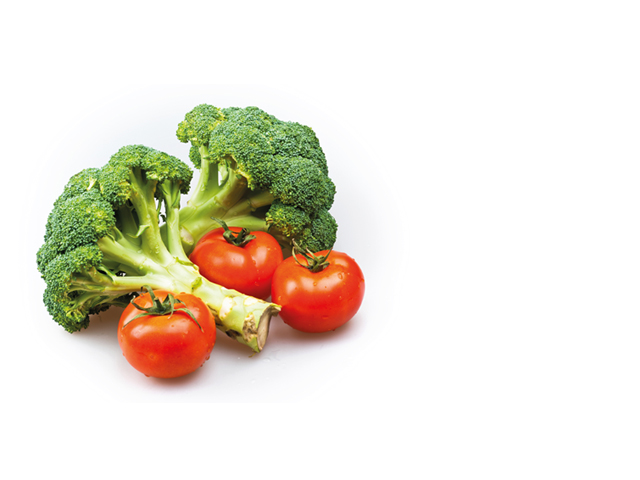
Information

Why do we eat vegetables? They taste good, they’re healthy and we need them to be able to live. These factors all revolve around a variety of compounds and how we can adjust our breeding activities to make our products better for the consumer and more resilient to environmental influences.
There are basically two categories of compounds,” says Senior Researcher Jan-Willem de Kraker, who is studying compounds using biochemical analyses. The first being primary metabolites, which are substances that plants produce to maintain life and growth, such as sugars and amino acids. Plants also create secondary metabolites that protect them from pests and pathogens and also attract pollinators and seed-dispersing animals. Secondary metabolites are of particular interest to us researchers because of their potential benefit to human health.
Here’s a breakdown of the role compounds play in varieties we develop:
The tastier vegetables are to us humans, the more attractive they are to insects. “Breeders are always looking for a balance that produces a good flavour for consumers without attracting extra insects,” says Post-harvest Researcher Anne Marie Schoevaars. Tomatoes, for example, contain three types of compounds that are primarily responsible for the flavour: sugars, acids – including glutamate – and aromatic compounds. Sugars and acids are primary metabolites while aromatic compounds are secondary metabolites. Aromatic compounds attract animals that can help spread the seeds in fruits in their excrements.
Have you ever eaten a strong-smelling or fragrant food with your nose pinched closed? Then you’ll know that the food tasted quite a bit less interesting. That’s because you don’t pick up the aromatic compounds when your nose is closed. De Kraker shared “An aroma consists of volatile compounds - as the nasal and oral cavities are connected, air flows from the mouth to the nose when you eat. This enables us to pick up on the more specific ‘secondary flavours’, such as fruity. Secondary flavours taste different from the primary flavours - sweet, sour, salty and bitter - which we can identify with our tongue.
Humans are programmed not to like bitter things because bitter is nature’s signal that something is toxic. A bitter compound in plants is also a defence mechanism against pest damage. Some crops, such as cucumbers, carrots and eggplants, have had the bitter compound bred out of them, but it is still present crops like endive, chicory and bitter melon. "If we were to breed out the bitter compound from endive, for example, we would end up with a vegetable that looks and tastes like lettuce and is just as susceptible to diseases as lettuce. Plus, these bitter compounds can be beneficial for our health in low concentrations and can be found in most plants,” Kraker shared.
Glucosinolates are natural bitter/pungent tasting metabolites that protect plants against herbivores, fungi and bacteria. With their typical cabbage and mustard flavours, these substances are - in low concentrations - extremely healthy. In fact, it is even thought that glucosinolates can protect the body against cancer. Broccoli is of particular interest in relation to cancer prevention. There are about 120 different natural glucosinolates and can be found in all brassicas, such as Brussels sprouts and other cruciferous crops (cabbages).

Another compound with a typical flavour is capsaicin, a component that is mainly found in the placenta (or pith) of chilli peppers. This substance leaves a burning sensation in the mouth and is how these plants protect themselves from mammals and fungi. Because the plant still needs help to distribute its seed, birds are unaffected by capsaicin and have no problem eating the fruits to spread the seeds through their droppings. And what can capsaicin do for the human body? There is some evidence that it may help with weight loss and may prevent nerve pain and certain cancers.
The best-known compounds are vitamins. There are thirteen substances in the vitamin’s category, and we need them for many different processes in our body, such as growth, energy, organ function, etc. The same applies to plants; they too need vitamins to maintain vital life processes. There seems to be a link between the keeping qualities of crops and the vitamins they contain. Vitamin C (ascorbic acid) is often added to foods to prolong their shelf life.
Leafy vegetables are particularly high in fiber, which is one of the building blocks of plants and gives them strength and structure. In humans, fiber mainly has a bulking effect but also fills our stomachs without piling on the calories, so it is ideal for people on a weight-loss diet. Fiber also promotes good digestion and reduces the risk of cardiovascular diseases, type 2 diabetes and bowel cancer.
There are many compounds with many different functions for the plant and human health. By carrying out in-depth research, we are becoming increasingly aware of the positive effects certain compounds can have on us and are learning how we can incorporate them into our breeding activities to make our products even better for the consumer and even more resilient to environmental influences.